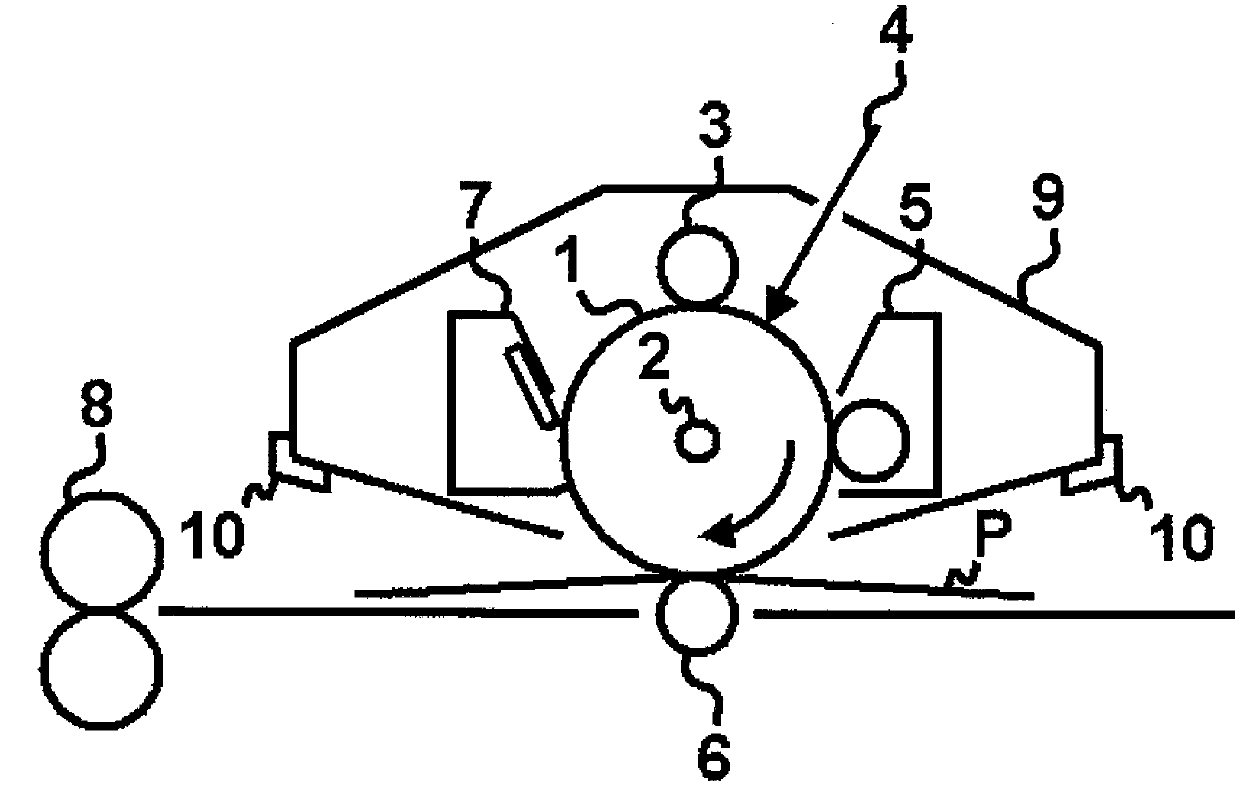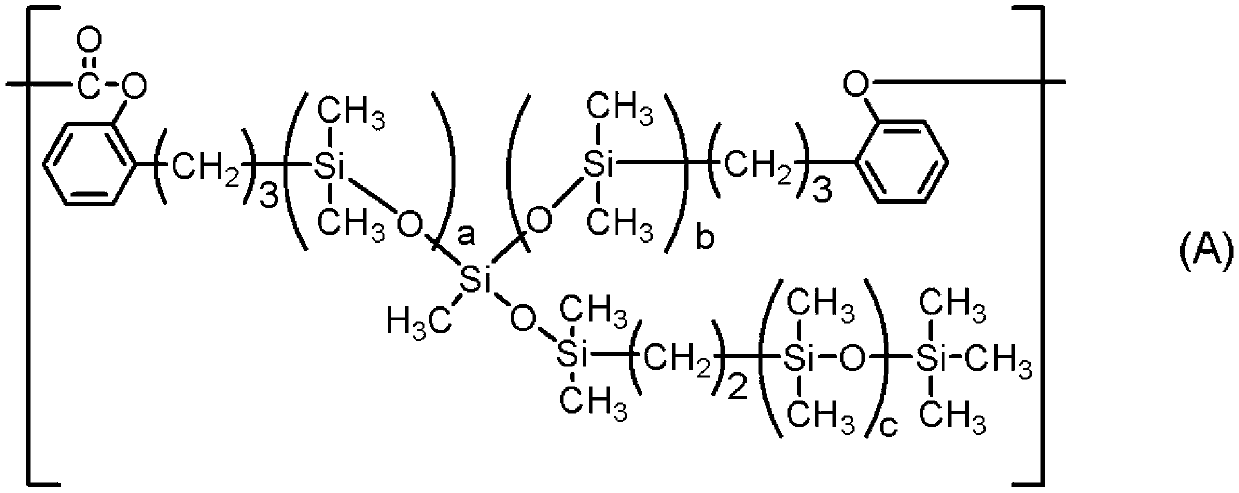Electrophotographic photosensitive member, process cartridge, electrophotographic apparatus, and method of manufacturing electrophotographic photosensitive member
An electrophotographic and photosensitive member technology, applied in optics, electrographics, instruments, etc., can solve the problem of inability to reduce contact stress and reduce potential stability, and achieve the effect of excellent potential stability
- Summary
- Abstract
- Description
- Claims
- Application Information
AI Technical Summary
Problems solved by technology
Method used
Image
Examples
Embodiment 1
[0147] An aluminum cylinder having a diameter of 30 mm and a length of 260.5 mm was used as the conductive support.
[0148] Next, use 10 parts of SnO with a mixed solvent of 4 parts methanol and 16 parts methoxypropanol 2 Coated barium sulfate (conductive particles), 2 parts of titanium oxide (pigment for controlling resistance), 6 parts of phenolic resin, and 0.001 part of silicone oil (leveling agent), thereby preparing a conductive layer coating liquid.
[0149] The conductive layer coating liquid was applied onto the aforementioned aluminum cylinder by dip coating and cured (thermally cured) at 140° C. for 30 minutes, whereby a conductive layer having a film thickness of 15 μm was formed.
[0150] Next, 3 parts of N-methoxymethylated nylon and 3 parts of copolymer nylon were dissolved in a mixed solvent of 65 parts of methanol and 30 parts of n-butanol, thereby preparing an intermediate layer coating liquid.
[0151] The intermediate layer coating liquid was applied onto...
Embodiment 2 to 45
[0170] Electrophotographic photosensitive members were prepared in the same manner as in Example 1 except that the components [α], [β] and [γ] in the charge transport layer were replaced as shown in Table 3, and evaluated. It was confirmed that each of the resulting charge transporting layers included a region containing component [α] in a matrix containing components [β] and [γ]. Table 8 shows the results.
[0171] It should be noted that the weight average molecular weight of the polycarbonate resin C used as the component [β] was found as follows.
[0172] (C-5) / (C-7)=8 / 2:120,000
[0173] (C-1): 100,000
Embodiment 46 to 90
[0175] Electrophotographic photosensitive members were prepared in the same manner as in Example 1 except that the components [α], [β] and [γ] in the charge transport layer were replaced as shown in Table 4, and evaluated. It was confirmed that each of the resulting charge transporting layers included a region containing component [α] in a matrix containing components [β] and [γ]. Table 8 shows the results.
[0176] It should be noted that the weight average molecular weight of the polycarbonate resin C used as the component [β] was found as follows.
[0177] (C-5) / (C-7)=8 / 2:120,000
[0178] (C-2): 130,000
[0179] (C-3) / (C-5)=3 / 7:100,000
PUM
| Property | Measurement | Unit |
|---|---|---|
| Diameter | aaaaa | aaaaa |
| Thickness | aaaaa | aaaaa |
| Thickness | aaaaa | aaaaa |
Abstract
Description
Claims
Application Information
 Login to View More
Login to View More - R&D
- Intellectual Property
- Life Sciences
- Materials
- Tech Scout
- Unparalleled Data Quality
- Higher Quality Content
- 60% Fewer Hallucinations
Browse by: Latest US Patents, China's latest patents, Technical Efficacy Thesaurus, Application Domain, Technology Topic, Popular Technical Reports.
© 2025 PatSnap. All rights reserved.Legal|Privacy policy|Modern Slavery Act Transparency Statement|Sitemap|About US| Contact US: help@patsnap.com



